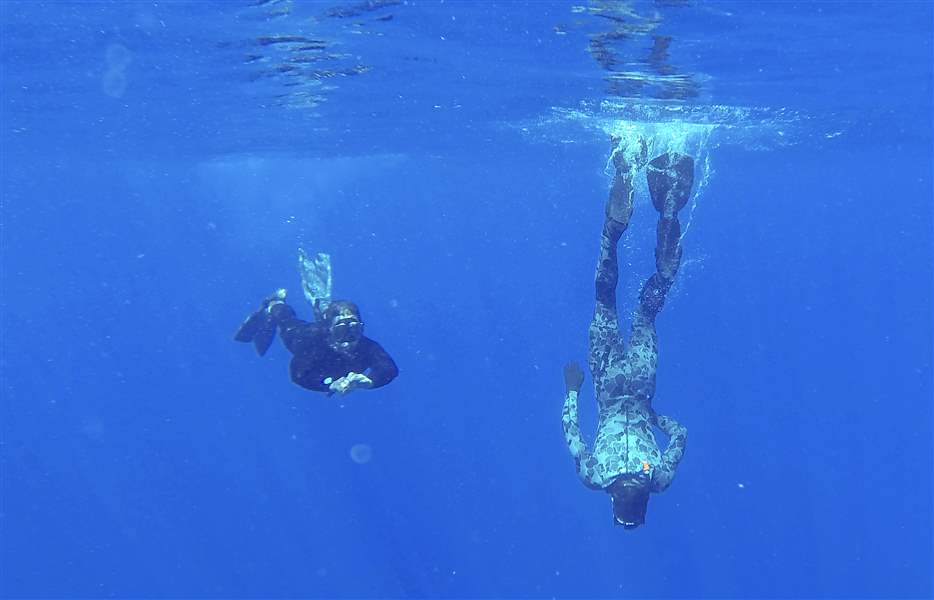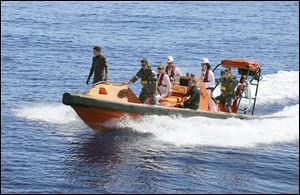
More underwater pings heard in hunt for plane
Australian official says search equipment has detected 2 more signals in hunt for jet
4/8/2014
Australian Defense Force Able Seaman Clearance Divers Matthew Johnston, right, and Michael Arnold, from the Australian Defense Vessel Ocean Shield, scan the water for debris from the missing Malaysia Airlines Flight 370.
ASSOCIATED PRESS

A fast response craft manned by members from the Australian Defense's ship Ocean Shield is deployed to scan the water for debris of missing Malaysia Airlines Flight 370.
PERTH, Australia — "I'm now optimistic we'll find the aircraft or what's left of the aircraft in the not too distant future, " said Air Chief Marshal Angus Houston, the chief coordinator for the Australian operation.
A ship searching for the missing Malaysian jet has detected two more signals that are consistent with a plane’s black boxes, the Australian official in charge of the search said today.
INFOGRAPHIC: view scale as to how far down black box may be
Houston said that the Australian navy’s Ocean Shield picked up the two signals in a sweep on Tuesday.
The Ocean Shield first detected the sounds late Saturday and early Sunday before losing them, but managed to find them again on Tuesday, Houston said. The ship is equipped with a U.S. Navy towed pinger locator that is designed to pick up signals from a plane’s black boxes.
“Hopefully in a matter of days, we will be able to find something on the bottom that might confirm that this is the last resting place of MH370,” Houston said at a news conference in Perth, the starting point for the search in the southern Indian Ocean.

Australian Defense Force Able Seaman Clearance Divers Matthew Johnston, right, and Michael Arnold, from the Australian Defense Vessel Ocean Shield, scan the water for debris from the missing Malaysia Airlines Flight 370.
Finding the sound again is crucial to narrowing the search area so a small submarine can be deployed to chart a potential debris field on the seafloor. If the autonomous sub was used now with the sparse data collected so far, covering all the potential places from which the pings might have come would take many days.
“The better Ocean Shield can define the area, the easier it will be for the autonomous underwater vehicle to subsequently search for aircraft wreckage,” Houston said.
Malaysia Airlines Flight 370 carrying 239 people on board went missing March 8 on a trip from Kuala Lumpur, setting off one of aviation’s biggest mysteries. The search has shifted from waters off of Vietnam, to the Strait of Malacca and then finally to waters in the southern Indian Ocean as data from radar and satellites was further analyzed.
The locator beacons on the black boxes have a battery life of only about a month — and Tuesday marked exactly one month since the plane vanished. Once the beacons blink off, locating the black boxes in such deep water would be an immensely difficult, if not impossible, task.